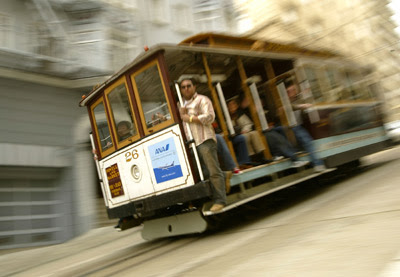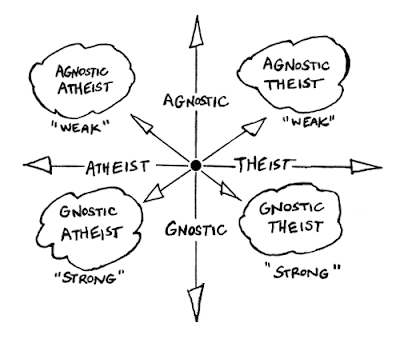The Trolley Problem: A Thought
Watching the train pass below me as I crossed the bridge over the tracks today got me to thinking about the trolley problem.
Basically, the trolley problem is a moral quandary in which the brain has a difficult time determining whether is it permissible to kill one person to save five, or let one live while knowingly allowing five deaths that could have been prevented.
Scenario A, the first part of the problem, the trolley is barreling down the tacks toward five people who are unaware that they will soon be little more than smudges. Luckily, there is a fork in the tracks, and by simply pulling a lever, the trolley will divert onto a second set of tracks as it moves away from the five innocent bystanders. Low and behold, however, before you pull the lever you notice a single moron picking up pennies off the rails (he also happens to be deaf). Unaware that the train is coming his life would be terminated if you pull the lever.
The choice is, do you pull the lever and save five people by sacrificing one? Or do you let all five perish, while the moron picking up pennies gets to become a few cents richer? According to studies, most people say it is permissible to pull the lever.
Scenario B, the second scenario, the difference is that, this time, there is only one track. Instead of a lever, you are standing on a bridge. There is one other person on the bridge with you. Meanwhile, once again, on the tracks down below are five bystanders oblivious to the harm headed their way. The question scenario B posits is, if pushing the person next to you onto the tracks would sufficiently stop the trolley and save the five people down below, is it permissible to do so?
Interestingly enough, most people say that it is impermissible to push the person over the edge in an act of intentional harm.
But what has changed? In scenario A you deliberately pulled a lever which you understood would divert the trolley onto another set of tracks and kill a single person. Scenario B posits the exact same difference, except you are personally pushing the person onto the tracks from the bridge and causing harm. Yet for some reason, in one scenario your brain thinks taking the life is permissible, and in the other scenario your brain thinks it is impermissible. Obviously the brain is experiencing conflicting moral messages--and is at an impasse. Our moral sense is confounded.
What is interesting about the trolley problem is that it shows that even simple moral precepts, like don't kill, or don't take a life, are far more complicated than they initially appear.
Now there have been various solutions applied to the trolley problem. For example, the principle of double effect has been applied so show how scenario A is inductive of not allowing harm, although their maybe some unavoidable collateral damage, whereas scenario B is a direct act of causing harm, which directly contributes to the survival of five others. The principle of double effect claims that it is morally impermissible to act out in a harmful manner. Whereas scenario A is the act of pulling the switch, scenario B is the act of deliberately harming someone. In other words, the distinction the principle of double effect seeks to highlight is that an act of allowing harm is not the same as an act of causing a harm.
However, many philosophers have pointed out that--morally speaking--nothing has changed accept for what we define as "morally permissible." The moral problem still persists. After all, not preventing a violent rape isn't the same as actually raping somebody, but you would have to be a cold hearted bastard not to prevent a rape which could save another person's life.
The thought that occurred to me while peering down over the railing at the tracks this morning was this. Let us take away the moral implications from the trolley problem, and see what happens.
Pretend, for a moment, that you are a sociopath. Unable to tell the difference between right and wrong, good and bad, in normal social situations which require moral intuition, all you have to rely on to get by in society is your statistical information and logic. Logic dictates that you sacrifice the one for the many every time. Not because of any moral obligation, but because it makes more statistical sense. As a sociopath, we could very well let the five die without bringing harm to the one, but a logical sociopath wouldn't simply allow five people to die, because that doesn't make any statistical sense to a person relying on logic (remember--to better grasp the moral dilemma here we have omitted moral obligations--for the time being).
This brings out an obvious objection to answers like the principle of double effect, because if you run the trolley problem again, and again, and again, repeatedly, then, the funny thing is, the sociopath--who cannot distinguish between right and wrong--will always end up saving MORE people than the moral person who abides by the moral obligation not to willfully enact harm or do evil.
The reason I find this interesting, is because the morally indifferent person can potentially save millions, while having only killed a few, thus realizing a greater moral good. Whereas the morally righteous person will be faced with the realization that they have allowed for millions upon millions of deaths because of their refusal to sacrifice one for the many. An act which no greater moral good can be found.
The question becomes, then, for the morally righteous person is this: what exact number of innocent deaths must we allow for, i.e. require, before it becomes morally permissible to push just one person onto the tracks? 1, 2, 3 deaths? 50? 1,000? 10,000?
Now be careful. I'm not asking anyone to put a value on a life. All life is precious--of inestimable value and worth. What we have to consider though--is how can we say the innumerably precious things, such as a life, all of them immeasurably valuable, have more or less value than the next? That's the moral dilemma we face here--because the question we are forced to contend with asks us to define and designate the parameters of what we deem as morally permissible when it comes to weighing the value of one priceless item with the value of many priceless items. But since they are all of them priceless, there is no correct way to go about determining their value. It is like trying to argue where infinity begins and ends. It's a rather futile task. This is the confusion the brain is having in trying to figure out which scenario is better with regard to the trolley problem when, in point of fact, they are statistically the same.
It seems to me that the implication here is the statistical data of which dictates the proper action seemingly outweighs the moral intuition. Whether this is good or bad, I cannot pretend to know the answer to. Perhaps, we should use statistical computations to help model morality with prospective logic to aid us in moral decision making. I don't know. I just thought by positing a logical sociopath, instead of a morally righteous bystander, the test shows that righteous morality may in fact pose a greater threat to society than sociopathy. A strange moral realization if there ever was one.






Comments
Post a Comment